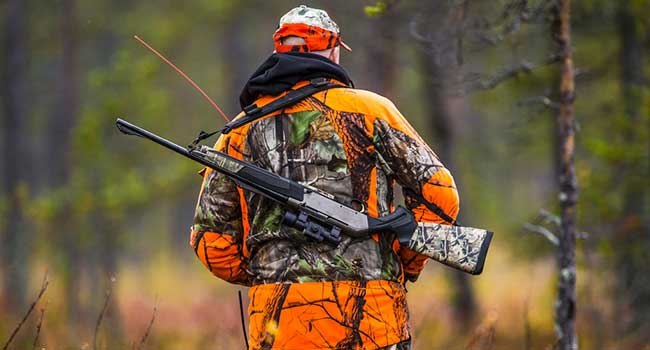
Going Hunting This Fall
Travel tips for hunters.
- By Ralph C. Jensen
- Sep 19, 2018
If you are planning a hunting trip, and getting there requires an airplane trip, you might want to consult the Transportation Security Administration (TSA) for travel tips while traveling with common items used for hunting
“When carrying out our screening duties at the airport, TSA routinely encounters rifles, bows and arrows, knives and other items used by sportsmen and hunters,” said Dan Fevold, TSA federal security director for Montana. “On the 17th anniversary of the 9/11 attacks, it is an opportune time to refresh our knowledge of the procedures and rules for traveling on a commercial aircraft with these items.”
Rifles and handguns can be transported on a commercial aircraft, but only if they are unloaded, packed in a locked, hard-sided case and placed in checked baggage. Ammunition and firearm parts, including firearm frames, receivers, clips and magazines are also prohibited in carry-on baggage and must be checked.
A passenger should go to the airline ticket counter during the check-in process to declare guns, ammunition and any and all firearm parts. Ammunition should be transported in its original packaging.
A good TSA recommendation is that firearm magazines and ammunition clips – whether loaded or empty – must be transported in checked baggage, and accompany the firearm if possible. Small arms ammunition that does not exceed .75 caliber for a rifle or pistol and shotgun shells of any gauge may be transported in the same case as the firearm.
Travelers should check with their airline prior to their flight to ensure they comply with any airline-specific requirements. Passengers are encouraged to check firearm laws and regulations at their destination to ensure they are in compliance with local and state laws.
An assembled bow and/or arrow are not allowed in carry-on baggage and must also be transported as checked luggage. TSA recommends they be transported in a hard-sided cases. Bear spray is not permitted in either checked or carry-on luggage.
All knives, regardless of blade length, are prohibited in carry-on luggage. It is recommended that hunting knives are securely packed alongside firearms in the locked, hard-sided case. In the interest of TSA officer safety, this placement is preferred to packing knives among personal items in a checked suitcase where an officer could unexpectedly encounter a sharp blade during a bag check.
Any type of replica firearm is prohibited in carry-on baggage and must be transported in checked luggage. TSA permits rifle scopes to be transported in either carry-on or checked bags.
TSA reminds passengers to be aware of the contents of their carry-on bag prior to coming to the security checkpoint. TSA has multiple resources available to passengers to help them determine whether an item is permitted in carry-on baggage, checked baggage or not at all.
Travelers can visit TSA’s “What Can I Bring?” page or download the MyTSA mobile app. Travelers can also Tweet or Facebook message AskTSA if they have a travel question or are unsure if an item is allowed through security in a carry-on bag. Just snap a picture or send a question and get real-time assistance every day from 7 a.m. to 5 p.m. mountain time. TSA’s website has additional traveler information specifically related to the commercial air transport of firearms and ammunition.
About the Author
Ralph C. Jensen is the Publisher/Editor in chief of Security Today magazine.